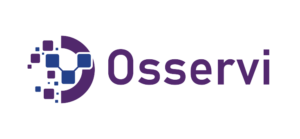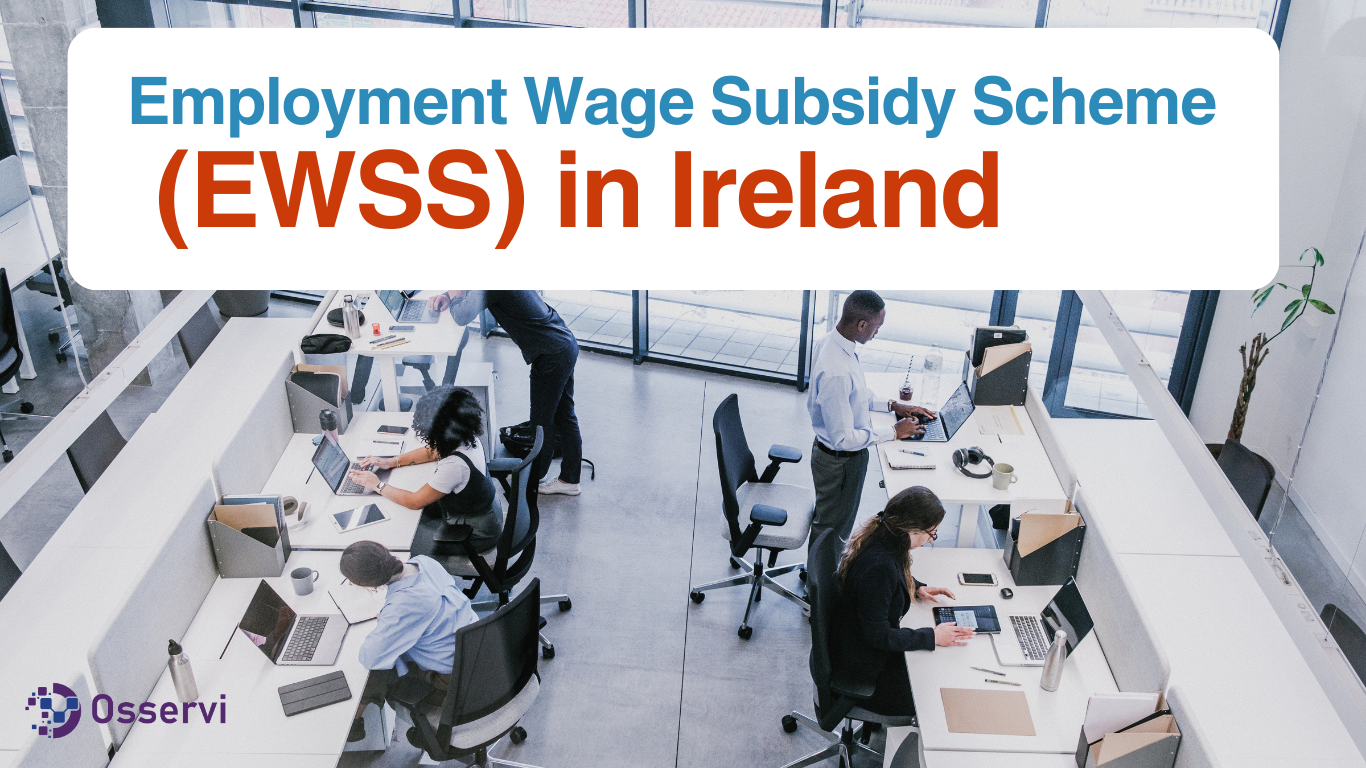The Employment Wage Subsidy Scheme (EWSS) is one of the most significant support measures introduced by the Irish government to help businesses navigate the economic challenges brought on by the COVID-19 pandemic. Designed to support employers in retaining employees during times of reduced business activity, the EWSS has been a lifeline for many companies across Ireland. This blog will explore everything you need to know about the EWSS, including its purpose, eligibility criteria, application process, payment rates, compliance requirements, and much more.
1. Overview of the Employment Wage Subsidy Scheme (EWSS)
The EWSS was introduced as a successor to the Temporary Wage Subsidy Scheme (TWSS), which was implemented at the height of the pandemic. While the TWSS was primarily focused on providing immediate financial relief, the EWSS aims to offer more sustained support as businesses work towards recovery. The primary goal of the EWSS is to maintain the link between employers and employees, preventing layoffs and supporting businesses in weathering the economic storm.
The scheme provides a wage subsidy to employers, enabling them to pay their employees even when business activity is significantly reduced. This has helped to preserve jobs and reduce the need for redundancies during difficult times.
2. Eligibility Criteria for EWSS
One of the most important aspects of the EWSS is determining whether your business qualifies for the scheme. The eligibility criteria are designed to ensure that only businesses genuinely impacted by the pandemic receive support. Here are the key conditions:
- Tax Clearance: The business must have a valid tax clearance certificate.
- Revenue Decline: The business must demonstrate that its turnover or customer orders have declined by at least 30% due to the pandemic. This comparison is made against the same period in 2019.
- Registered Employer: The employer must be registered with the Revenue as an employer and must have PAYE/PRSI responsibilities.
- Active Business: The business must be operational, and employees must be on the payroll. The scheme is not available for businesses that have ceased trading or have been liquidated.
3. How to Apply for EWSS in Ireland
Applying for the EWSS involves several steps, but the process is straightforward if you follow the guidelines provided by the Revenue. Here’s a step-by-step guide:
- Register for EWSS: Before you can claim subsidies, you must register for the EWSS through the Revenue Online Service (ROS). Registration is mandatory, and claims can only be made after successful registration.
- Calculate Eligibility: Ensure that your business meets the 30% decline in turnover or orders. This calculation should be documented as it may be requested by Revenue for verification purposes.
- Submit Payroll: Once registered, you can submit your payroll as usual through your payroll software or via ROS. The EWSS subsidy will be calculated automatically based on the gross pay submitted.
- Receive Payment: Subsidy payments are made directly to the employer’s bank account, typically within a few days of payroll submission. These payments help cover the cost of employee wages.
4. EWSS Payment Rates and Calculations
Understanding how the EWSS payments are calculated is crucial for managing your business finances. The subsidy is based on the gross pay of each employee and is capped at a certain amount. As of the latest guidelines, here’s how the payment rates are structured:
- Gross Pay Between €151.50 and €202.99 per week: Subsidy of €151.50.
- Gross Pay Between €203 and €1,462 per week: Subsidy of €203.
- Gross Pay Less than €151.50 or More than €1,462 per week: No subsidy.
These rates are designed to provide meaningful support to employers while ensuring that the subsidy is targeted at those who need it most. The subsidy is calculated on a per-employee basis and is paid to the employer, who then passes it on to the employee through their regular payroll.
5. EWSS Compliance and Reporting Requirements
Compliance with the EWSS guidelines is essential to avoid penalties or the repayment of subsidies. Here are some key compliance and reporting requirements:
- Revenue Audits: The Revenue may audit your business to ensure that you meet the eligibility criteria and have correctly calculated the subsidy. Keep detailed records of your revenue decline calculations and payroll submissions.
- Regular Reviews: Businesses must regularly review their eligibility for the scheme. If your turnover improves and no longer meets the 30% decline threshold, you must cease claiming the subsidy.
- Correct Payroll Processing: Ensure that your payroll submissions are accurate and that the subsidy is passed on to employees as intended. Incorrect submissions can lead to delays in payment or potential penalties.
- Tax Implications: The EWSS payments are subject to PAYE, USC, and PRSI, so it’s important to ensure that these deductions are made correctly.
6. Updates and Changes to the EWSS
The EWSS has undergone several updates since its introduction, with changes to payment rates, eligibility criteria, and deadlines. Staying informed about these updates is crucial for businesses relying on the scheme. Here are some of the recent changes:
- Extended Duration: The scheme has been extended several times to continue supporting businesses as the economic situation evolves.
- Adjusted Payment Rates: The payment rates have been adjusted to reflect changing economic conditions and the level of support needed.
- Sector-Specific Support: Some sectors, such as hospitality and tourism, have received additional support due to the disproportionate impact of the pandemic on these industries.
It’s essential to keep an eye on announcements from the Revenue and the Department of Finance to stay up to date with the latest changes.
7. EWSS vs. Other Wage Subsidy Schemes
The EWSS is one of several wage subsidy schemes introduced in response to the pandemic. Comparing the EWSS with other schemes can help businesses determine which one best suits their needs. Here’s how the EWSS stacks up against the Temporary Wage Subsidy Scheme (TWSS):
- Duration: The TWSS was a short-term emergency measure, while the EWSS is designed for longer-term support.
- Payment Rates: The TWSS had a more complex payment structure, with subsidies varying based on different income brackets. The EWSS has a simpler, more straightforward rate structure.
- Eligibility: The TWSS was available to a broader range of businesses at the height of the pandemic, while the EWSS has more stringent eligibility criteria.
- Flexibility: The EWSS allows for more flexibility in managing payroll, as employers can include new hires in their claims, which was not possible under the TWSS.
8. Case Studies: Businesses Benefiting from EWSS
Many businesses across Ireland have benefited from the EWSS, helping them retain staff and continue operations during challenging times. Here are a few examples:
- Retail Sector: A mid-sized retail chain saw a 40% decline in turnover during the pandemic. By utilizing the EWSS, they were able to keep their employees on payroll and avoid layoffs, ensuring that they were ready to reopen fully once restrictions eased.
- Hospitality Industry: A small hotel experienced a significant drop in bookings due to travel restrictions. The EWSS allowed them to maintain a core team of staff, enabling them to continue operating at a reduced capacity.
- Manufacturing Company: A manufacturing firm faced supply chain disruptions that impacted production. With the help of the EWSS, they could retain their skilled workforce and resume full operations once conditions improved.
These case studies highlight the versatility of the EWSS in supporting businesses across various sectors.
9. Impact of EWSS on the Irish Economy
The EWSS has had a profound impact on the Irish economy, helping to stabilize employment levels and support businesses through unprecedented challenges. By maintaining the employer-employee relationship, the scheme has prevented a surge in unemployment and provided businesses with the breathing room needed to navigate the pandemic.
As businesses begin to recover, the EWSS continues to play a critical role in the Irish economy’s resilience. The scheme’s ongoing support is vital for ensuring a sustainable recovery and minimizing the long-term economic impact of the pandemic.
10. Frequently Asked Questions about EWSS
Here are some common questions that businesses often have about the EWSS:
- Can new employees be included in the EWSS? Yes, employers can claim the EWSS subsidy for new employees hired after the scheme began.
- What happens if my business no longer meets the 30% decline threshold? If your business’s turnover improves and no longer meets the threshold, you must cease claiming the subsidy.
- Is the EWSS subsidy taxable? The subsidy itself is subject to PAYE, USC, and PRSI, so it must be processed correctly through payroll.
- Can directors of a company qualify for the EWSS? Proprietary directors can qualify for the EWSS, provided they meet specific conditions set out by Revenue.
Conclusion
The Employment Wage Subsidy Scheme (EWSS) has been an invaluable resource for businesses across Ireland, providing essential support during one of the most challenging periods in recent history. By understanding the scheme’s intricacies— from eligibility criteria and application processes to compliance requirements and payment calculations—businesses can effectively utilize the EWSS to sustain their operations and safeguard jobs.
As the Irish economy continues to recover, the EWSS will remain a crucial component of the support structure for businesses, helping to ensure a smooth transition to a post-pandemic landscape. Staying informed and compliant with the scheme’s requirements is key to maximizing the benefits and contributing to Ireland’s economic resilience.
Continue Reading
Get a personal consultation.
Call us today at (01) 5170179
Packages to suit your budget (we are on avg 30% better value than competitors)..
Frequent Searches Leading To Pages:
Payroll Services Ireland | Payroll Services | Payroll Ireland | Payroll Outsourcing Ireland | Outsourced Irish Payroll | Outsource Payroll Services Ireland | Outsourced Irish Payroll Services Dublin & Ireland | Ireland Payroll Service | Payroll companies Ireland | Payroll service provider





